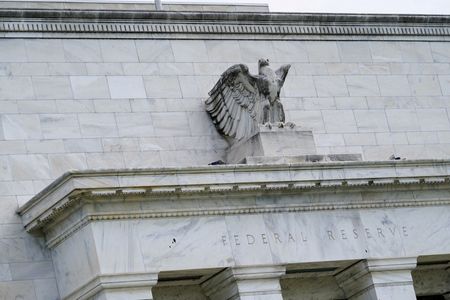By Ann Saphir, Lindsay Dunsmuir and Michael S. Derby
(Reuters) -Federal Reserve policymakers on Friday said they are ready to lower interest rates at the U.S. central bank’s meeting in two weeks, with one of them saying he could support back-to-back reductions, or a bigger cut in borrowing costs, should the cooling labor market need support.
“It is now appropriate to dial down the degree of restrictiveness in the stance of policy by reducing the target range for the federal funds rate,” New York Fed President John Williams said at a Council on Foreign Relations event, though by how much and at what pace, he added, is still up in the air.
Fed Governor Christopher Waller, speaking at the University of Notre Dame, went a little further.
“If the data supports cuts at consecutive meetings, then I believe it will be appropriate to cut at consecutive meetings,” Waller said. “If the data suggests the need for larger cuts, then I will support that as well. I was a big advocate of front-loading rate hikes when inflation accelerated in 2022, and I will be an advocate of front-loading rate cuts if that is appropriate.”
The remarks leave little doubt that U.S. central bankers have turned the monetary policy page, completing their shift to a focus on maintaining full employment from what had been a singular focus on bringing down inflation. The Fed is now widely expected to cut its policy rate, currently in the 5.25%-5.50% range, at its Sept 17-18 meeting, an expectation that Fed Chair Jerome Powell set up two weeks ago when he said “the time has come” to ease policy, given progress on inflation and cooling in the labor market.
Waller echoed Powell’s choice of phrase, and added, “it is likely that a series of reductions will be appropriate.”
Data published earlier on Friday showed monthly job gains have averaged 116,000 in the June-August period, below what many economists estimate is needed to meet the job-growth needs of an expanding population. That along with other recent data “reinforces the view that there has been continued moderation in the labor market,” Waller said.
While the data indicates softening but not deterioration, and the economy does not look to be headed to recession, he said, “the current batch of data no longer requires patience, it requires action.”
Both Williams and Waller also noted progress on bringing inflation down, with Waller saying it is now on the “right path” to get to the Fed’s 2% goal.
Underlying inflation, as measured by the change in the core personal consumption expenditures price index, is averaging 2.6% when measured on an annualized six-month basis and 1.7% on an annualized three-month basis.
‘SKY IS NOT FALLING’
Traders of futures that settle to the Fed’s policy rate are now pricing a 77% chance that the U.S. central bank will cut its policy rate, currently in the 5.25%-5.50% range, by 25 basis points at its meeting in two weeks.
They are pricing in a 4.25%-4.50% policy rate by the end of this year, a level that implies a bigger rate cut at one of the Fed’s last two meetings of the year.
“It is clear that the employment market is slowing down, and the Fed has to start to move,” said Eugenio Aleman, chief economist at Raymond James.
“But the sky is not falling, the floor is not shaking … and making a 50-basis-point cut will send an incorrect signal to the market” that the economy is falling apart, he said. “And they don’t want to do that.”
(Reporting by Ann Saphir; Editing by Paul Simao)





